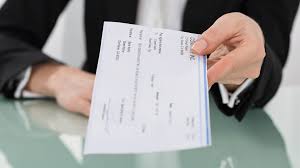The Gap Between CEO and Worker Pay Is Nearing Pre-Financial Crisis Levels

While the U.S. stock market has soared since President Donald Trump’s 2016 election, those rising tides have disproportionately boosted the salaries of CEOs—rather than their workers.
Indeed, while CEOs of the nation’s 350 largest companies earned about $ 18.9 million in 2017, a 17.6% raise from a year earlier, their workers’ paychecks increased roughly 0.3% during the same time period, according to a Thursday study from the Economic Policy Institute.
As a result, those CEOs are paid on average 300 times more than their employees—a level not seen since just before the Financial Crisis in 2007 and the Dotcom bubble in 2000.
“CEO compensation really spiked in 2017,” said Lawrence Mishel, a distinguished fellow at the EPI. “It was totally driven by CEOs cashing out stock options, and the high value of stocks awarded to CEOs.”
While CEOs were paid about 312 times more than the average worker in 2017, that figure reached 327 in 2007 and 361 during the 2000 Internet bubble. That’s based on a CEO’s so-called realized pay—in other words, the executive’s take-home pay from that year, including cash, stock, and options realized.
This disparity has generally trended upwards in recent decades, with some lulls when the stock market flags. Companies have increasingly offered executives comp packages that include a hefty portion of company stock. In theory, this tie-up is thought attract talented leaders, while also encouraging CEOs to better manage their companies. That stock is a massive financial advantage for those in corner office; about 43% of Americans don’t own any equities at all, according to an April Gallup poll.
So, while equity-based compensation—buoyed by the stock market’s wins—helped push CEO pay up in 2017, worker salaries remained flat during a year when the S&P 500 surged 19%.
Adding to echoes of the two prior stock market crashes in U.S. history: Investors are in an aging bull market. While it’s proved to be a lesson in folly to try to time the market’s downturn, its hard to ignore the fact that the economy and the stock market ebb and flow. As a result, U.S. bull markets since World War II have lasted roughly between 13 months to 113 months—we’re now just shy of that outer limit.
If this run lasts, the S&P 500 may post a new bull market record on Aug. 22. That’s not to say a downturn is in the immediate future, but investors will certainly have their eyes peeled for signs.










